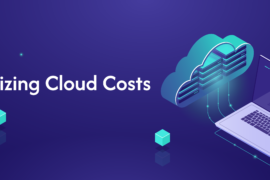In today’s fast-paced digital landscape, organizations are increasingly relying on cloud infrastructure to support their operations. While the benefits of cloud computing are significant—such as scalability, flexibility, and accessibility—many companies struggle with managing costs and performance effectively. We understand that optimizing your cloud infrastructure is essential to achieving your business goals without overspending. Here, we delve into key strategies for enhancing both cost efficiency and performance in your cloud environment.
1. Assess Your Current Cloud Usage
The first step in optimizing your cloud infrastructure is to conduct a thorough assessment of your current usage. This involves analyzing your cloud services, storage, and compute resources. Identify underutilized resources that can be scaled down or terminated, as well as any services that are not delivering value. Tools like AWS Cost Explorer, Azure Cost Management, or Google Cloud Billing can provide insights into your spending patterns and usage trends.
2. Implement Auto-Scaling
One of the most effective ways to enhance performance while controlling costs is to implement auto-scaling. This feature allows your cloud resources to automatically adjust based on demand. By scaling resources up or down in real-time, you can ensure that your applications always have the capacity they need without incurring unnecessary costs during periods of low demand. This not only optimizes performance but also minimizes wastage, allowing you to pay only for what you use.
3. Optimize Storage Solutions
Cloud storage can become a significant cost center if not managed correctly. Review your storage solutions and consider options such as data tiering, where frequently accessed data is stored on higher-performance storage, while less frequently accessed data is moved to cheaper, slower storage solutions. Additionally, regularly clean up unused or obsolete data to free up storage and reduce costs. Implementing lifecycle policies can automate this process, ensuring that your storage remains cost-effective.
4. Leverage Cloud Cost Management Tools
Utilizing cloud cost management tools can provide valuable insights into your spending and help identify areas for improvement. These tools can help track your costs, forecast future spending, and analyze trends over time. Popular solutions include CloudHealth, CloudCheckr, and Spot.io. By leveraging these tools, you can gain a clearer understanding of your cloud expenses and make informed decisions to optimize your infrastructure.
5. Consider Reserved Instances and Savings Plans
If you have predictable workloads, consider utilizing reserved instances or savings plans offered by cloud service providers. These options allow you to commit to a certain level of usage over a period (usually one or three years) in exchange for significant discounts compared to on-demand pricing. This can lead to substantial cost savings, especially for applications with steady usage patterns.
6. Optimize Networking
Network costs can also add up quickly, especially if your cloud infrastructure involves data transfer between multiple regions or services. To optimize networking costs, consider strategies such as consolidating data transfer, reducing inter-region data transfers, and using Content Delivery Networks (CDNs) to cache and deliver content more efficiently. By streamlining your network architecture, you can improve performance while keeping costs in check.
7. Regularly Review and Adjust
Cloud optimization is not a one-time task; it requires ongoing monitoring and adjustments. Regularly review your cloud usage, performance metrics, and costs to identify new opportunities for optimization. Establish a routine to evaluate your cloud strategy and make necessary changes based on evolving business needs and technological advancements.
Optimizing cloud infrastructure for cost and performance is an ongoing journey that requires diligence and strategic planning. By assessing your current usage, implementing auto-scaling, optimizing storage, leveraging cost management tools, considering reserved instances, and streamlining networking, your organization can maximize the benefits of cloud computing. At TecoreLabs, we are committed to helping businesses navigate this complex landscape, ensuring that your cloud infrastructure not only meets your performance needs but also aligns with your budgetary goals.





